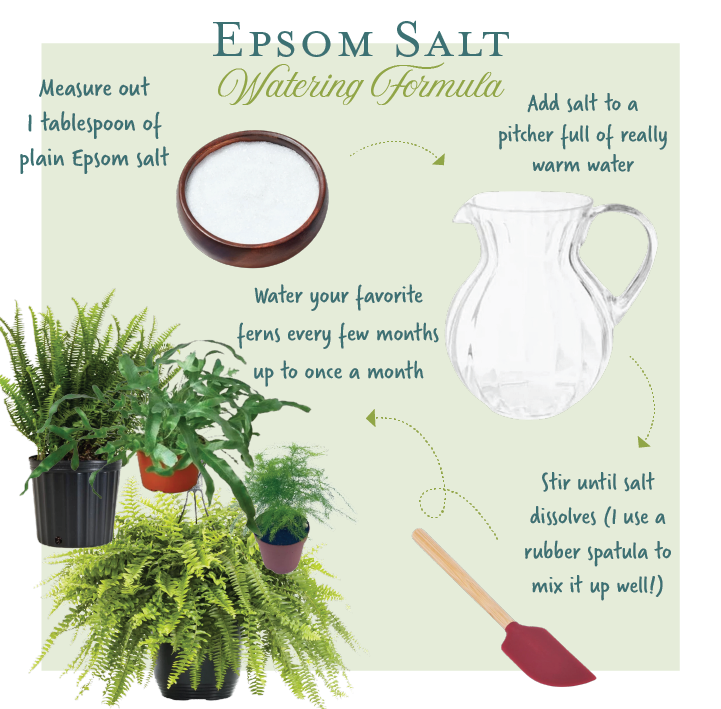Stay clear of These Plants: What Plants Don't Like Epsom Salt
Stay clear of These Plants: What Plants Don't Like Epsom Salt
Blog Article
Explore Why Some Plants Decline Epsom Salt as a Nutrient Resource
In the elaborate world of plant nutrition, the being rejected of Epsom salt as a practical nutrient resource by some plants poses an intriguing dilemma. The factors behind this selective actions delve right into a complicated interaction of plant absorption devices, the distinct chemical structure of Epsom salt, and plant-specific nutrient choices.
Plant Absorption Devices
In delving into the intricate world of plant absorption devices, it becomes apparent that the process is regulated by an advanced interaction of molecular paths and physical characteristics. Plants take in nutrients largely via their roots, using various transport systems to uptake essential aspects such as nitrogen, phosphorus, potassium, and magnesium. Magnesium, a vital element in chlorophyll synthesis and enzyme activation, plays an essential role in plant development and advancement.
The absorption of magnesium involves a number of steps, starting with its schedule in the dirt service. When liquified, magnesium ions are used up by plant origins with certain transportation healthy proteins embedded in the cell membranes. These healthy proteins facilitate the activity of magnesium throughout the root cell wall surfaces and into the plant's vascular system, where it is after that dispersed to different cells to support different physical functions.
Comprehending the intricate systems behind magnesium absorption in plants sheds light on how this vital nutrient adds to total plant wellness and performance. By maximizing magnesium uptake paths, cultivators can improve crop yields and high quality, highlighting the relevance of understanding plant absorption characteristics for sustainable farming techniques.
Epsom Salt Chemical Structure
The chemical framework of Epsom salt, additionally known as magnesium sulfate heptahydrate, exposes a distinctive setup of aspects that contribute to its distinct properties and applications. The seven water particles are loosely bound to the magnesium sulfate compound, allowing it to dissolve easily in water and be conveniently taken up by plants with their roots.
The crystal framework of Epsom salt creates monoclinic prisms, which are elongated crystals with parallel ends. This crystal shape influences the physical properties of Epsom salt, such as its appearance and solubility. Recognizing the chemical framework of Epsom salt is essential for comprehending its behavior as a nutrient source and its communications with plants in farming and horticultural methods.
Plant-Specific Nutrient Preferences
Plants exhibit distinctive choices for details nutrients, stressing the value of recognizing their specific demands for optimum development and growth. Comprehending these plant-specific nutrient choices is important for making the most of plant yields, enhancing decorative plant growth, and advertising total plant health.

Plant-specific nutrient preferences can additionally vary based on whether the plant is a monocot or dicot. By tailoring see post nutrient supplements to fulfill the accurate requirements of each plant species, cultivators can maximize plant growth, minimize nutrition waste, and assistance lasting agricultural techniques.

Soil Ph and Nutrient Uptake
Soil pH plays a vital role in establishing the availability of vital nutrients for plant uptake. Acidic soils with a lower pH are desirable for plants like azaleas and blueberries, while alkaline soils with a greater pH match plants such as lavenders and clematis.
On the various other hand, alkaline soils may restrict the schedule of nutrients like iron, copper, and zinc, affecting plant development. Maintaining the ideal blog pH degree in the soil is important for making certain that plants can efficiently uptake the needed nutrients for their healthy and balanced development and productivity.
Genetic Consider Nutrient Uptake
In the realm of plant nourishment, the interplay of genetic factors substantially affects the uptake of crucial nutrients vital for plant development and growth. Genetic variables play a pivotal duty fit a plant's capacity to soak up and make use of nutrients successfully. Variants in genetics can affect the expression of transportation proteins in charge of relocating nutrients across cell membrane layers. These transport healthy proteins, such as channels and carriers, are inscribed by certain genetics that can differ among plant species or perhaps within the exact same varieties.
Moreover, genetic elements likewise figure out the efficiency of nutrient uptake mechanisms within plants. Some plants might have hereditary attributes that enhance their ability to feed on nutrients from the dirt efficiently, giving them a competitive benefit in nutrient-poor settings. On the other hand, hereditary variants can additionally cause limitations in nutrient uptake, making sure plants a lot more at risk to shortages also when nutrients are bountiful in the dirt.
Understanding how hereditary factors influence nutrient uptake is essential for establishing techniques to maximize plant nutrition and improve crop performance in numerous farming settings. By unwinding the have a peek here genetic mechanisms involved in nutrient uptake, researchers can function in the direction of developing genetically boosted plant ranges with boosted vitamins and mineral purchase abilities.
Final Thought

In the detailed globe of plant nourishment, the being rejected of Epsom salt as a feasible nutrient source by some plants poses an appealing quandary. what plants don't like epsom salt. Comprehending these plant-specific nutrient preferences is important for taking full advantage of crop yields, enhancing ornamental plant development, and promoting general plant health
By customizing nutrient supplements to satisfy the accurate requirements of each plant types, growers can optimize plant growth, lessen nutrient waste, and support sustainable farming methods.
In the realm of plant nutrition, the interaction of genetic variables dramatically influences the uptake of essential nutrients vital for plant growth and advancement. Recognizing these intricacies in plant nutrient uptake is vital for maximizing plant development and health and wellness in farming techniques.
Report this page